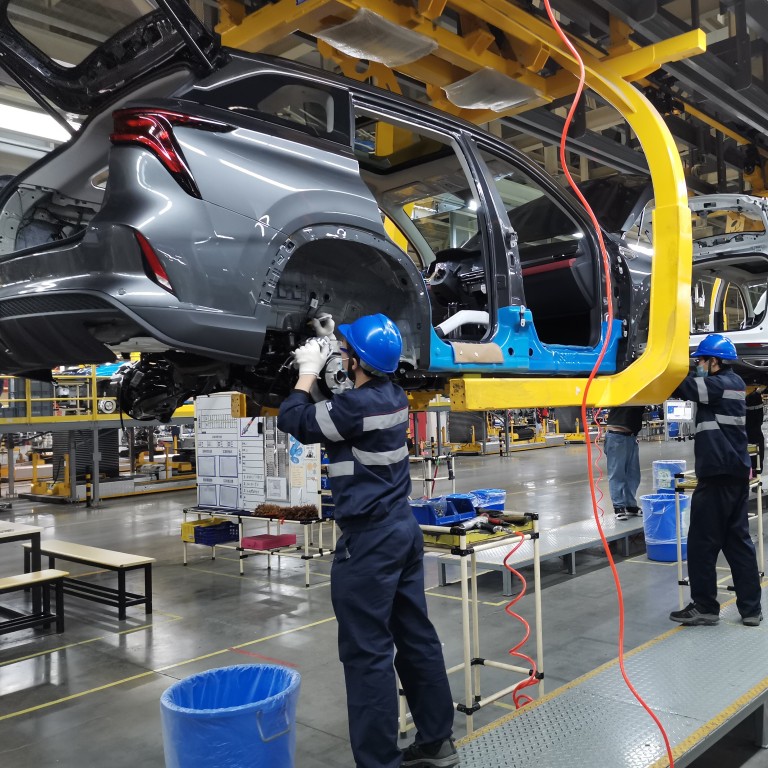
China’s manufacturing activity growth slips to lowest level since May
- The Caixin/Markit manufacturing purchasing managers’ index (PMI) fell to 50.9 in February, the lowest level since May
- The slowdown in the manufacturing sector underscores the fragility of the ongoing economic recovery in China
China’s factory activity expanded at the slowest pace in nine months in February as weak overseas demand and coronavirus flare-ups weighed on output, adding pressure on the country’s labour market, a business survey showed on Monday.
The slowdown in the manufacturing sector underscores the fragility of the ongoing economic recovery in China, although domestic coronavirus cases have since been stamped out and analysts expect a strong rebound in full-year growth.
February also saw the Lunar New Year holiday, when many workers return to their hometowns, although this year saw far fewer trips amid coronavirus fears.
The Caixin/Markit manufacturing purchasing managers’ index (PMI) fell to 50.9 last month, the lowest level since May.
Overseas demand continued to drag down overall demand … Surveyed manufacturers highlighted fallout from domestic flare-ups of Covid-19 in the winter as well as the overseas pandemic
“Overseas demand continued to drag down overall demand … Surveyed manufacturers highlighted fallout from domestic flare-ups of Covid-19 in the winter as well as the overseas pandemic,” said Wang Zhe, senior economist at Caixin Insight Group.
A sub-index for production fell to 51.9, the slowest pace of expansion since April last year, while another sub-index for new orders fell to 51.0, the lowest since May.
Export orders shrank for the second month. Factories laid off workers for the third month, and at a faster pace, with Wang noting “companies were not in a hurry to fill vacancies.”
An index of confidence in the year ahead rose however to 63.0, the highest since October. Input and output prices continued to rise albeit at a slower pace.
“Now the major challenge for policymakers will be maintaining the post-coronavirus recovery while paying close attention to inflation,” Wang added.
Analysts from HSBC this week forecast that China’s economy would grow by 8.5 per cent this year, leading the global recovery from the pandemic.
The latest manufacturing surveys suggest that factory activity didn’t receive the boost we had anticipated from travel restrictions over the Spring Festival
“The latest manufacturing surveys suggest that factory activity didn’t receive the boost we had anticipated from travel restrictions over the Spring Festival. Nevertheless, we think activity will remain fairly robust in the near-term,” said economists Mark Williams and Sheana Yue from Capital Economics.
“The survey data suggest that manufacturing activity didn’t receive the boost we had expected as a result of workers not being able to return home for the Lunar New Year.
“The PMIs are seasonally-adjusted, so should take into account the usual pattern of firms’ shutdowns in the festive period, though adjustment isn’t always exact.
“Looking ahead, given that the surge in infections in January has been quashed, the recovery in services activity should resume before long. The big picture, supported by the latest figures, is that China’s growth remains fairly robust, but it is slowing from previously very rapid rates.”

